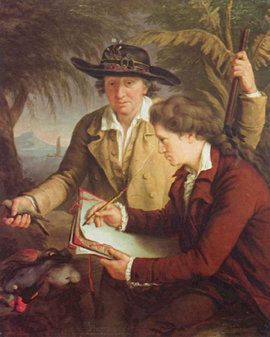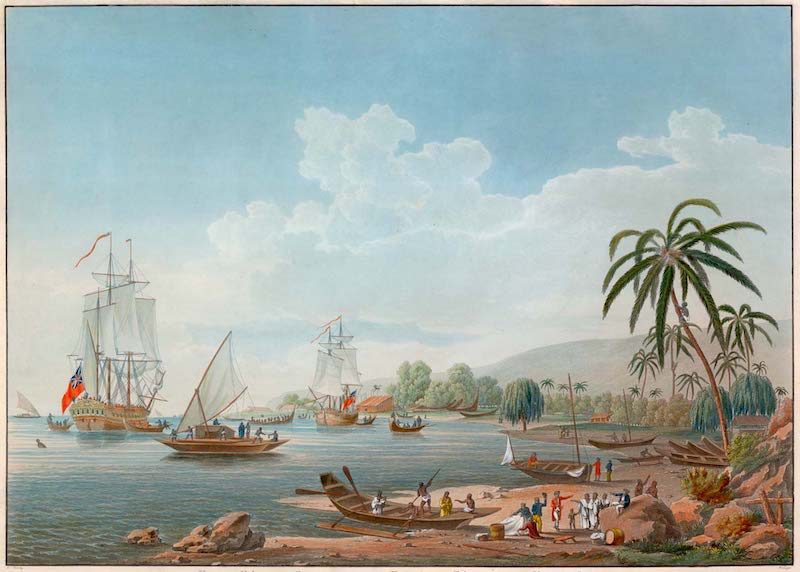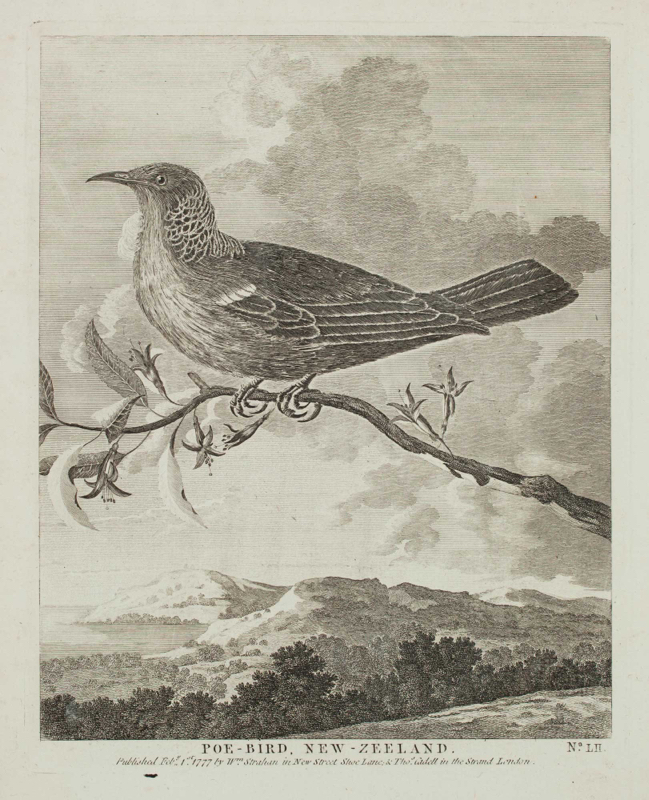Georg Forster & Skinnera excorticata

Along with his father, Johann Reinhold Forster (1729-1798), the young Forster accompanied James Cook on his second voyage of discovery in the Pacific. At Queen Charlotte Sound, either in 1773 or 1774, they collected Skinnera excorticata. It would later be moved to Fuchsia.
The elder Forster and his son, Georg or George as he was known in English, were chosen to replace Joseph Banks (see also) when he withdrew from the expedition. The Forsters collected specimens of Fuchsia excorticata at Queen Charlotte Sound in New Zealand, either during November 1773 or October-November 1774, one of the two periods when they were able to go ashore to botanize there.
They dedicated their published description to John Forster's friend, the Rev. Richard Skinner, as Skinnera excorticata in 1776 (see also ➤ Skinnera). The Forsters were not aware, or perhaps didn't recognize, that the same plant had already been collected by Banks and Daniel Solander (see also) on the first Cook voyage (1768-1771).

While Agapanthus calciflorous had been provisionally penciled in on the back of the Banks & Solander manuscript drawing of their earlier collection, that name was never validly published. The Fosters's Skinnera excorticata was moved to Fuchsia in 1781 by Carl Linnaeus the Younger when he recognized its connection with the genus. See also ➤ Section Skinnera.
A keen and sympathetic observer of both people and nature, the younger Forster's report of the journey, A Voyage Round the World, would be praised as one of the best books of its time and remains an important ethnographical record.
Georg Forster went on to accomplish much more as a naturalist, ethnologist, travel writer, journalist, professor, even as a revolutionary, and was one of the leading luminaries of the Enlightenment in Germany.
➤ Georg Forster
(Illustrations: 1. Portrait of Georg Forster and his father Johann Reinhold Forster in Tahiti by John Francis Rigaud, 1780; 2. View of Queen Carlotte Sound [sic]. The view is later identified as Matavi Bay in Tahiti. After John or James Cleveley. One of four by Benedikt Piringer (1780-1826) in set of scenes of the Third Voyage by Thomas Martyn published in 1787-88; 3. Poe-Bird, New Zealand. James Cook, A Voyage Towards the South Pole, and Round the World, 1777. This plate shows the poe-bird perched on a flowering branch of Skinnera excorticata (now Fuchsia excorticata) and is one of five botanical illustrations in the book taken from the Forsters. These plates were not attributed to the Forsters due to a dispute with Cook and the Admiralty over the joint authorship of the expedition's journal.)
